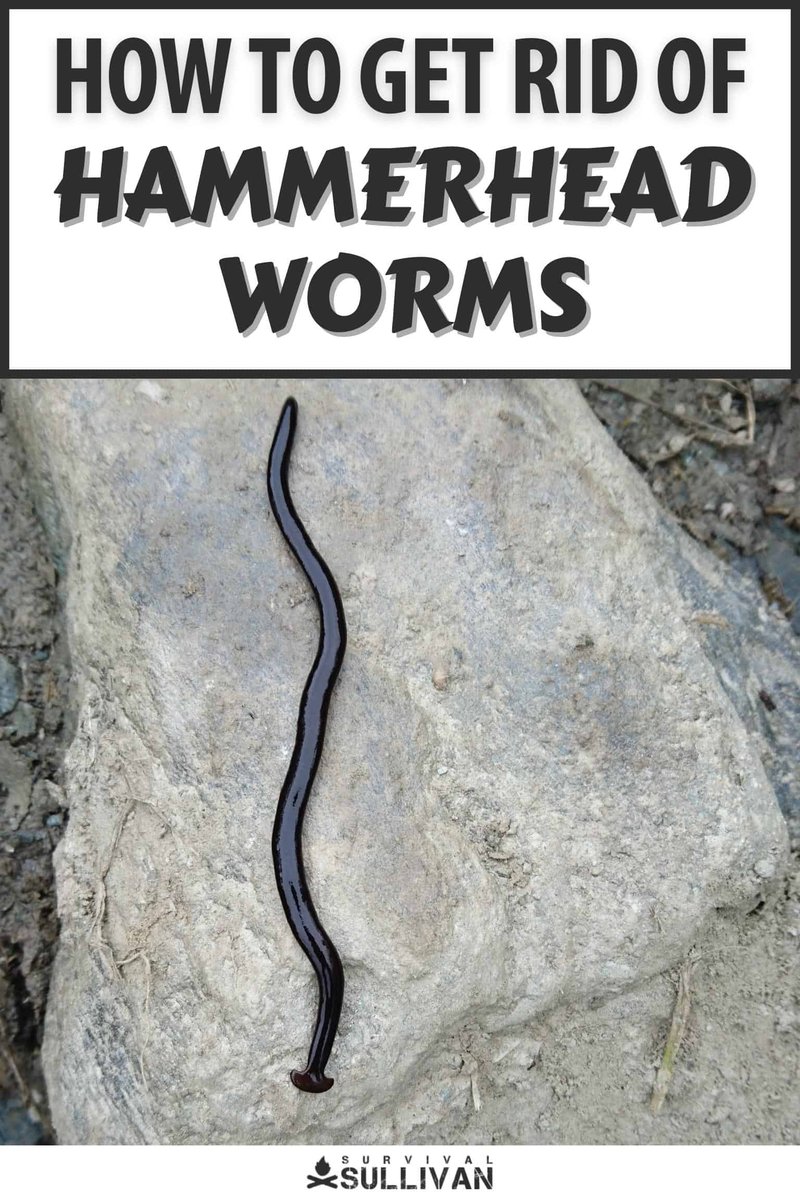
Now, just to clarify, hammerhead worms aren’t exactly a common household name. They belong to a family of flatworms called **Bipalium** and are often found in tropical and subtropical regions. They may be intriguing to look at, but safely handling them requires a little know-how. So, if you find yourself dealing with one, grab your gloves and tools—let’s make sure you know how to do it right!
Understanding Hammerhead Worms
Hammerhead worms can be a bit of an enigma. They’re not your run-of-the-mill earthworms; these guys have a striking appearance with flattened bodies and a distinctive hammer-shaped head. You might spot them in your garden, enjoying the soil or hiding beneath leaves. They have a knack for movement that’s almost mesmerizing, like a dancer gliding across the stage.
There are several species of hammerhead worms, but most of them share similar traits. They can be quite large—sometimes reaching up to 12 inches! And while they are mostly harmless to humans, they can be harmful to your garden since they feed on earthworms and other beneficial soil organisms. So, while they may appear cool, they can disrupt your garden ecosystem if left unchecked.
Why You Should Wear Gloves
You might wonder, “Why gloves?” Well, here’s the thing: hammerhead worms can secrete toxins that might irritate your skin. Handling them barehanded could lead to discomfort or even allergic reactions in some people. Think about it like handling a spicy pepper; even if it looks harmless, it could leave you with a burning sensation if you’re not careful.
Wearing gloves acts as a barrier between you and the worm’s secretions. Choose gloves that are made from thicker materials, such as nitrile or rubber, which can offer better protection. It’s a small step that significantly reduces the risk of dealing with nasty rashes or other skin issues.
Essential Tools for Safe Handling
Aside from gloves, having the right tools makes your life easier when dealing with hammerhead worms. You could think of these tools as your trusty sidekicks—each one has a job that helps you manage the situation more effectively.
- Garden Trowel: This handy tool allows you to gently lift the worm without direct contact.
- Container: A small plastic or glass container can be used to safely transport the worm if needed.
- Long-Handled Tweezers: For those who want to keep their distance while handling, these are great for picking up the worm.
- Spray Bottle with Water: Sometimes a little moisture helps keep the worm calm if you need to keep it contained for a while.
Having these tools on hand not only equips you to handle hammerhead worms safely but also makes you feel like a pro at dealing with creepy crawlies.
Proper Techniques for Handling Hammerhead Worms
Now that you’ve got your gloves on and tools ready, let’s dive into the how-tos of handling these interesting creatures. The key is to approach them with care, much like you would with a delicate art piece.
First, use your garden trowel to gently lift the worm from its resting spot. Remember, the goal is to keep both you and the worm calm. If it looks agitated, you might want to give it a moment. Once it’s on the trowel, slowly transfer it to your container. If you’re using long-handled tweezers, aim for the thickest part of the worm to avoid any accidental breaks.
If you need to transport the worm, ensure the container has a secure lid but also allows some airflow. You want to keep it safe and comfortable, after all. And if you’re unsure about taking it somewhere for proper relocation, it’s best to let it stay in its habitat.
What to Avoid When Handling Hammerhead Worms
Handling hammerhead worms is like navigating a minefield; it’s easy to make mistakes. Here are a few things to avoid for a smoother experience:
First off, don’t handle them without gloves. I can’t stress this enough! Even a brief touch could lead to skin irritation. Also, avoid using bare hands for lifting or moving the worms—stick with your tools.
Another common mistake is to rush the process. Be patient. Rushing can lead to mishaps, like dropping the worm or causing it to secrete its toxins in response to stress. Whenever possible, take your time to ensure both you and the worm stay safe during the handling process.
Dealing with Hammerhead Worms in Your Garden
If you find hammerhead worms in your garden, you might be wondering what to do next. Since they can pose a threat to beneficial soil organisms, managing their population is essential.
Start by observing. If you only spot a couple, it might not be an urgent concern, but monitoring numbers is key. You can use your gloves and tools to carefully remove them as needed. If the population seems to grow, consider natural deterrents like coffee grounds or salt, as they might repel these worms.
Just remember, every creature has its purpose, and while hammerhead worms aren’t the best for your garden, there are humane ways to manage them effectively without causing unnecessary harm.
Wrapping Up Safely
Handling hammerhead worms doesn’t have to be daunting. With the right tools, techniques, and precautions, you can manage these unique creatures safely and effectively. Just think of it as a quirky adventure in your garden, much like a scavenger hunt—you never know what you might discover!
So, next time you come across one, you’ll feel equipped and confident to handle the situation. Remember, a little caution goes a long way, and your garden will thank you for safeguarding its ecosystem. Happy gardening!

